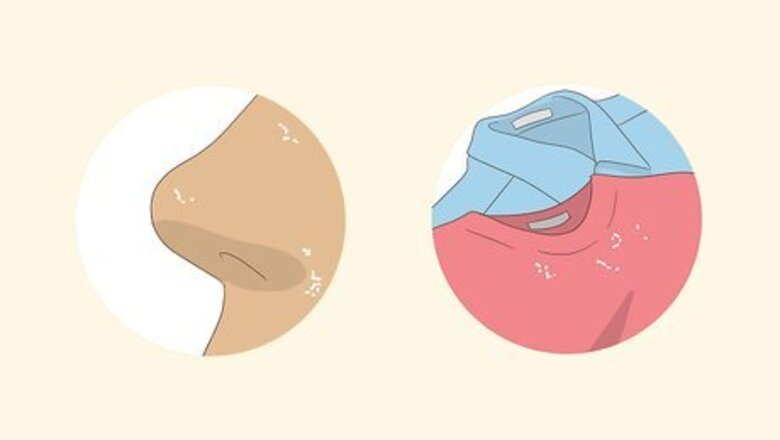
views
Spotting Physical Signs
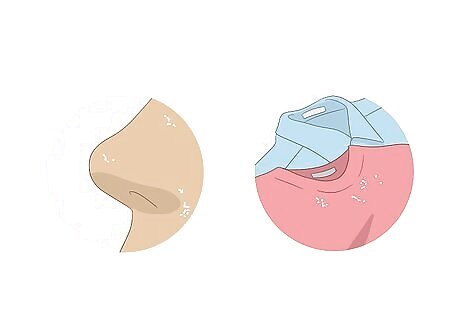
Look for white powder on the person's nose and belongings. Cocaine is a white powder that is commonly snorted through the nose. Look for a powdery residue on the person's nose and face. Even if the person has wiped away traces from his or her body, you might spot a residue on the person's clothing or on household surfaces. Check for items under the bed or under a chair that may have been used as a flat surface for snorting. The person may explain that the residue is powdered sugar, flour or another harmless substance. If you see it more than once, especially in an unlikely place (like on a magazine under the bed), it's probably not powdered sugar.
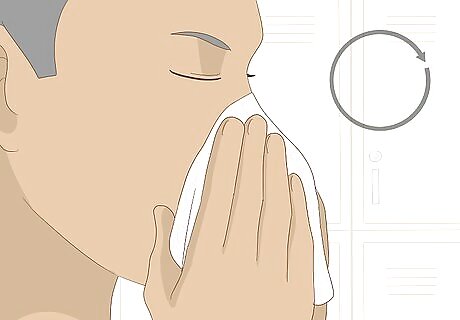
Notice if the person sniffs frequently or always has a runny nose. Cocaine is hard on the sinuses, and can cause a perpetual runny nose. Heavy users often sniff as though they have a cold, even if they don't demonstrate other signs of being sick. Touching or wiping the nose frequently is another sign that the person may be a cocaine user. After a prolonged period of heavy use, a cocaine user can experience nosebleeds and internal nose damage.

Check for bloodshot eyes. Since it's a powerful stimulant, cocaine causes a person's eyes to look red and bloodshot. See if the person's eyes look red and watery at odd times of the day. Cocaine causes sleep loss, so the person's eyes will look especially red in the morning.
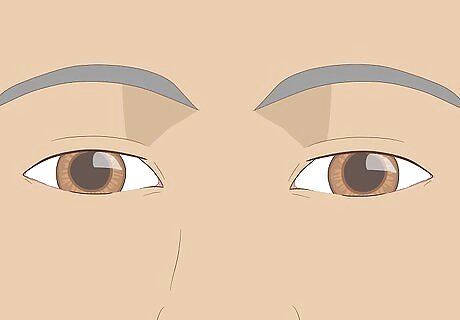
See if the person has dilated pupils. Cocaine causes the pupils to look wide and dilated. Notice the person's pupils to see if they look strangely dilated, even in a room that's well lit. Since having dilated pupils makes a person's eyes more sensitive to light, you may see the person wearing sunglasses to protect sensitive eyes. Dilated pupils last only as long as the actual high, so this physical sign is easy to miss. Many other types of drugs also cause dilated pupils. The presence of unnaturally dilated pupils does not necessarily indicate cocaine use.

Look for needle marks on the person's body. Serious users sometimes dissolve cocaine and inject it using a needle. Pay attention to the person's hands, forearms, feet and legs, and look for small puncture wounds that indicate a needle was inserted there. If you see tiny "track marks," the person may be using cocaine or other illicit drugs.

Look for drug paraphernalia. Cocaine can be snorted in powder form, smoked as crack cocaine, or directly injected. There are various items involved in its administration that you may find. White powder on mirrors, CD cases or other surfaces. Rolled up dollar bills, pipes, crack spoons, small plastic bags. Lemon juice or vinegar can be mixed with cocaine to produce a more intense rush. Sometimes heroin is taken at the same time as cocaine. This is known as 'speedballing.'
Identifying Behavioral Signs
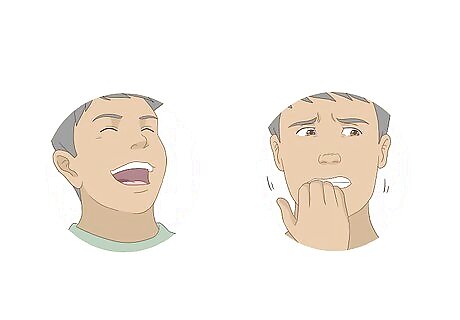
See if the person’s behavior is strange. Cocaine gives users a feeling of euphoria, so the person may seem happy for no apparent reason. The person may also seem paranoid or display nervous or restless behaviors, such as excessive fidgeting or pacing the room. Compare the person's behavior to his or her normal state to determine if cocaine or other drug use might be causing the person to act differently. You may also notice the person laughing more often. Sometimes people become abnormally aggressive or impulsive when they're high on cocaine. Hallucinations may also occur. The hyperactivity lasts only as long as the person is high, which can be anywhere between twenty minutes and two hours.
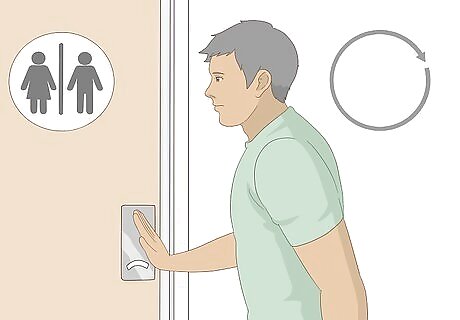
Notice if the person keeps leaving the room. Since a cocaine high only lasts a short period of time, it's necessary to use it frequently to maintain a feeling of euphoria. Cocaine users excuse themselves frequently to use more. If the person keeps going to the bathroom every 20 or 30 minutes, this may be a sign he or she is using. Of course, there are many other reasons someone might need to go to the bathroom frequently. Look for other signs that cocaine use might be the reason, such as a sense that the person has something to hide. You may also see the person leave the room with someone else every so often. Watch for furtive glances exchanged between people who may both be using cocaine.

See if the person has a decrease in appetite. Cocaine decreases a person’s appetite, so you may notice that they do not eat when other people are eating or that they may eat less than they normally would. Other side effects of using cocaine may also lead to loss of appetite, such as nausea and bowel decay. As a result of ongoing lack of appetite, the person may also lose weight and become malnourished.

Watch for the after-effects. When someone is coming down from a high, especially the day after using a lot of cocaine, he or she may feel lethargic and depressed. See if the person has trouble getting out of bed or demonstrates extreme moodiness the day after you suspect he or she used cocaine. If you notice a pattern of lethargy, it's possible the person is using. In many cases a cocaine user will stay isolated from others after using cocaine. If the person shuts the door to his or her room and won't come out, this could be a sign. Some people use sedatives or alcohol to combat the effects of cocaine and help them fall asleep.

Observe long-term changes. Long-term drug users risk becoming increasingly dependent on cocaine. Seeking the next high becomes a priority and other obligations in life may suffer. Look for the following signs that someone is a long-term, heavy user: Repeat users may develop tolerance to the drug and require increasing dosages to get the desired effect. They may be using as frequently as every ten minutes and indulge in week long binges. They may become secretive, unreliable and dishonest. They may exhibit dramatic mood swings, depression, or psychotic behavior, due to the neurological effects of the drug. They may neglect family or work responsibilities, and even personal hygiene. There may be a new group of friends and social contacts who also use cocaine. They may also develop infections or become sick more often as a result of a low immune system.
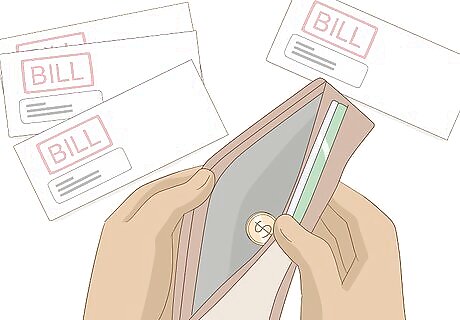
See if the person has financial problems. Cocaine is a very expensive drug. Heavy users will need a big income to keep up the habit. Since work life often suffers, the person's financial situation can quickly become a problem. The person may ask to borrow money without being explicit about what it will be used for. The person may also call in sick to work frequently, show up late, or be unable to meet their deadlines. In extreme cases, an individual may resort to stealing or selling personal possessions to fund a drug habit.
Knowing What Steps to Take
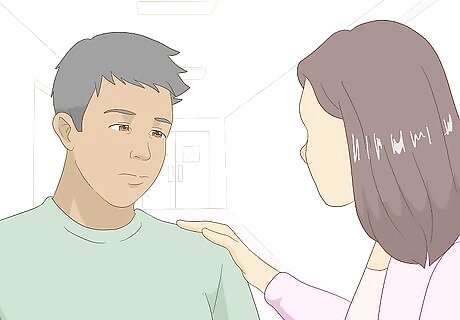
Speak up about your concerns. It's much better to say something than to stay silent. Tell the person you've noticed he or she is using cocaine and that you're concerned about his or her health and well-being. Say you want to help the person overcome his or her habit or addiction. Don't wait until the person has hit rock bottom. Cocaine is too dangerous for that. Don't allow it to "run its course" or go unchecked. List specific examples to help you "prove" that you know the person has used cocaine. Be prepared for the person to deny using.
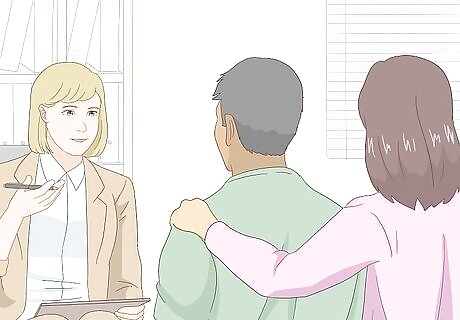
Get help if the person is your family member or close friend. If the person you're worried about is your child or a close family member, make an appointment with a drug counselor to get help right away. Dealing with a potential cocaine addiction is not something you'll be able to handle on your own. Find a counselor who is skilled in dealing with addictive behavior. A family therapist or school counselor could also be helpful.
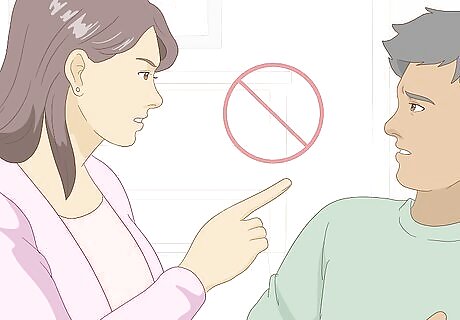
Don't resort to threats and intimidation. Ultimately, the person in question will have to take the initiative to stop. Attempting to control the situation using threats, bribes, and extreme punishments probably won't work. Invading the person's privacy, taking away responsibilities, and arguing with the person while they are high will probably just make things worse. Lay down enforceable consequences (like taking away his or her allowance or driving privileges) but don't make hollow threats you can't enforce. Try to figure out what the underlying problem is. Work with a counselor to determine what's causing this behavior.
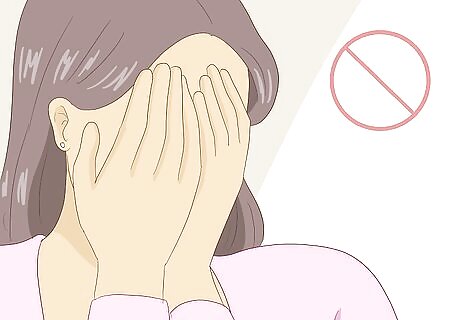
Avoid blaming yourself. Whether the person you're concerned about is your child or someone else, self-blame is unhelpful. The person's cocaine use is about him or her, not you. You can't control the person's decisions; all you can do is be supportive and encourage him or her to get help. Letting the person take responsibility for his or her behavior is essential when it comes to making a recovery.













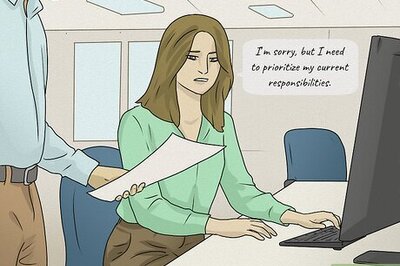






Comments
0 comment